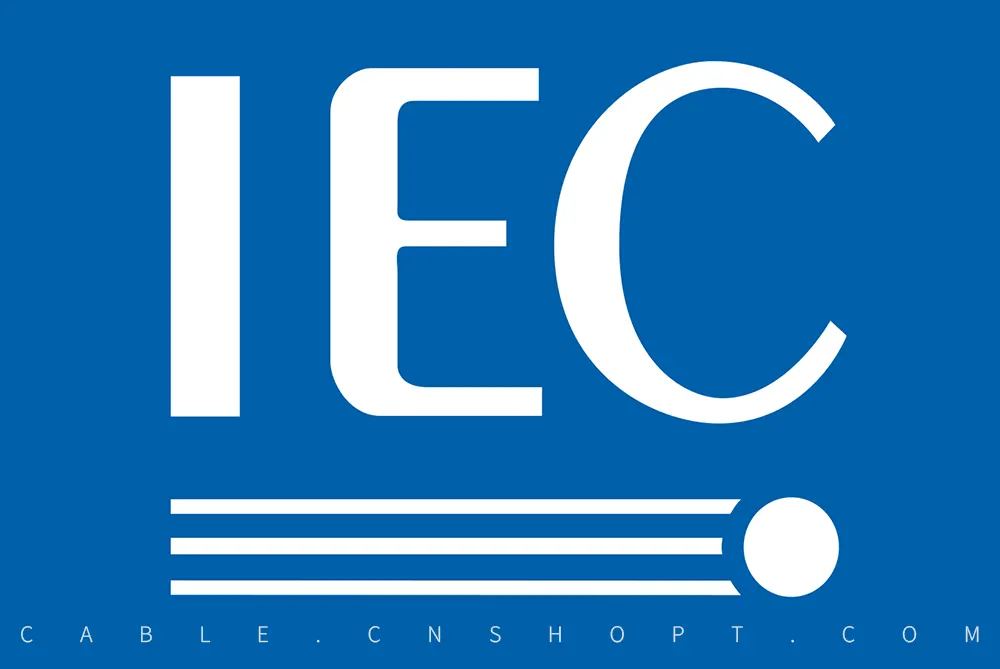In the global wire and cable industry, ensuring product safety, quality, and performance is paramount. To achieve this, manufacturers must adhere to strict international standards. These standards not only guarantee that cables meet specific technical requirements but also ensure compatibility and safety across various regions and industries.
The IEC (International Electrotechnical Commission) is a global body responsible for setting international standards for electrical, electronic, and related technologies. IEC standards cover various aspects of wire and cable manufacturing, from materials to installation.
Key IEC standards for cables include:
- IEC 60228: Specifies the classification of conductor types in electrical cables, defining conductor sizes and their construction.
- IEC 60502: Addresses the design and testing of power cables with extruded insulation for voltages from 1 kV to 30 kV.
- IEC 60332: Focuses on the flame retardancy of cables, ensuring that cables can withstand fire hazards in critical installations.
Compliance with IEC standards is vital for companies that operate internationally, as these guidelines are recognized in many countries, ensuring products meet globally accepted safety and performance levels.

The National Electrical Code (NEC), also known as NFPA 70, is widely used in the United States and Canada. It governs the safe installation of electrical wiring and equipment in both residential and industrial settings.
Some key aspects of the NEC include:
- Cable Ampacity Ratings: The NEC provides guidelines for determining the current-carrying capacity (ampacity) of different types of conductors.
- Installation Practices: The NEC outlines rules for proper wire and cable installation, including safety measures to prevent electrical fires or accidents.
- Conduit and Sheathing Requirements: It specifies the types of conduit, insulation, and sheathing that must be used in different environments.
The NEC is updated every three years to reflect new technology, safety improvements, and installation techniques, ensuring that electrical systems are as safe and efficient as possible.
The British Standards (BS) define regulations and specifications for a wide range of products and services in the UK, including electrical wires and cables. The most notable is **BS 7671**, also known as the IET Wiring Regulations, which governs electrical installations.
Other important BS standards include:
- BS 6004: Covers low-voltage electrical cables with PVC insulation, commonly used in residential wiring.
- BS 7211: Specifies requirements for thermosetting insulated cables for low-voltage applications, often used in fixed installations.
- BS EN 50288: Applies to multi-core cables with metallic conductors, focusing on performance in different operational environments.
The adherence to BS standards ensures cables meet the stringent safety and reliability expectations in the UK, with special focus on the safety of electrical installations in buildings.
The Deutsches Institut für Normung (DIN) is Germany's national organization for standardization. It sets detailed guidelines for the design, production, and testing of wires and cables, ensuring that products manufactured in or imported to Germany meet high standards of quality and safety.
Relevant DIN standards include:
- DIN VDE 0298: Covers the selection and installation of cables and insulated wires, providing comprehensive guidelines for different environmental conditions.
- DIN VDE 0276: Specifies cables for power distribution networks, covering medium- and high-voltage cables used in public utilities.
- DIN VDE 0815: Addresses cables for telecommunication systems, ensuring reliable data transmission.
DIN standards, especially those developed in collaboration with VDE (Verband der Elektrotechnik), are widely respected in Europe and set a benchmark for cable safety and performance.
Underwriters Laboratories (UL) is a globally recognized safety certification company based in the United States. UL standards ensure the safety and performance of a variety of products, including wires and cables.
Key UL standards related to wires and cables are:
- UL 83: Covers thermoplastic-insulated wires, focusing on their flame resistance, electrical performance, and durability.
- UL 1581: Provides the reference for electrical wires, cables, and flexible cords, detailing testing procedures and fire resistance requirements.
- UL 444: Governs communication cables, ensuring their reliability in transmitting voice, data, and video signals in structured wiring systems.
Many cables that meet UL standards carry the UL mark, a symbol of quality and safety recognized worldwide.
The Canadian Standards Association (CSA) sets the safety and performance guidelines for electrical products in Canada, including wires and cables. Compliance with CSA standards ensures that products are safe for use in Canadian installations.
Key CSA standards include:
- CSA C22.2 No. 49: Specifies the requirements for thermoplastic-insulated wires, including those used in residential, commercial, and industrial wiring.
- CSA C22.2 No. 38: Covers low-voltage cables for power circuits, outlining safety measures for cables operating at voltages up to 1000 volts.
- CSA C22.2 No. 239: Focuses on control and instrumentation cables, ensuring their suitability for industrial applications, including in harsh environments.
The Australian/New Zealand Standards (AS/NZS) provide guidelines for electrical equipment and installations in both Australia and New Zealand. These standards ensure safety in diverse environmental conditions, from urban centers to harsh outback regions.
Key standards include:
- AS/NZS 3008: Guides the selection of cables for electrical installations, based on voltage rating, insulation material, and environmental factors.
- AS/NZS 5000.1: Specifies the requirements for low-voltage power cables with extruded insulation, used in fixed installations.
- AS/NZS 1429.1: Covers high-voltage cables, particularly those used in utility networks for electricity transmission.
By adhering to these standards, manufacturers ensure that cables are safe for use across the region’s varied climates and conditions.
Whether you're looking for cables that meet IEC, NEC, BS, DIN, UL, CSA, or AS/NZS standards, CNSHOPT have the expertise and products to meet your needs. Contact us today to learn more about our wide range of compliant and certified wire and cable solutions.
CNSHOPT team will generally respond to your message within eight hours. If it is a weekend or a Chinese statutory holiday, there will be a delay.
We prefer you to contact us via email : info@cnshopt.com. In case of emergency, you can directly contact our WhatsApp account. If you do not receive our reply within 24 hours, please check your spam mailbox, it may appear there. We hope you will add our email to your trust list.